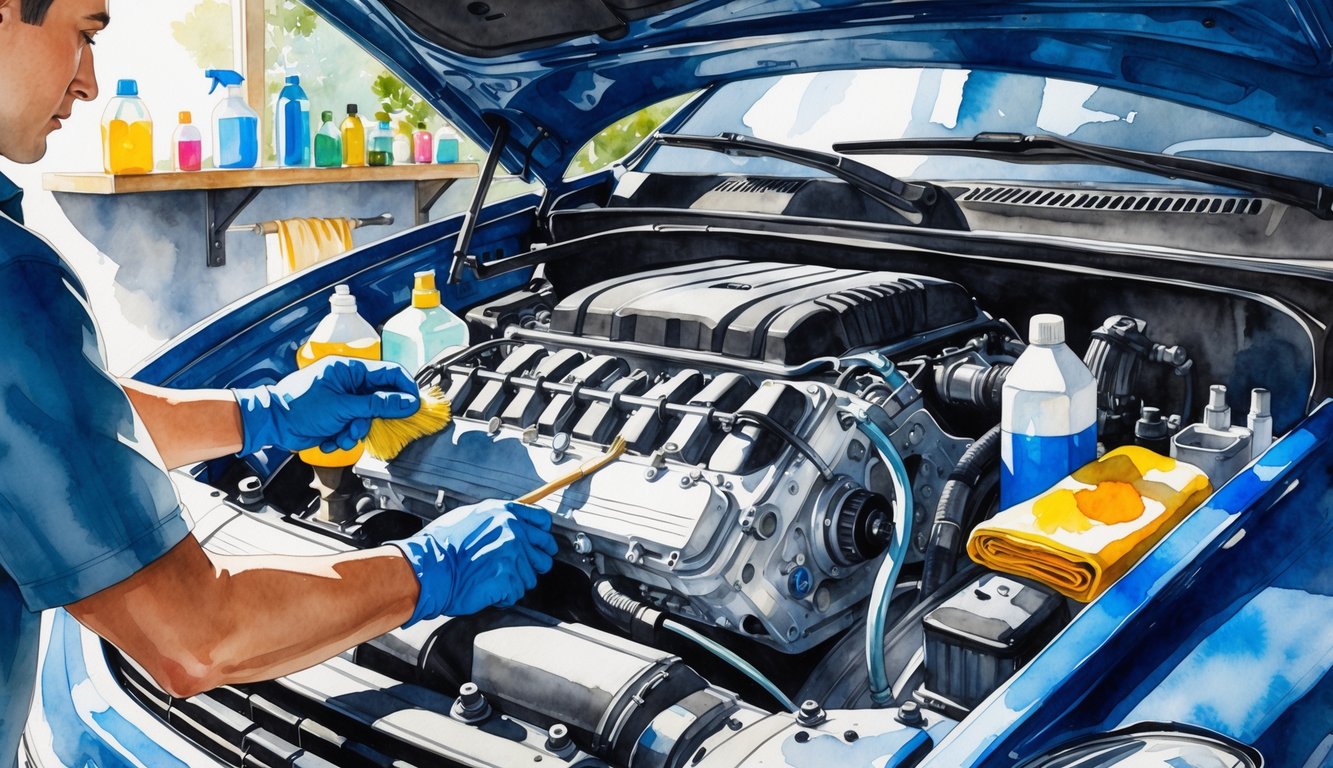
Protecting Sensitive Electronics and Connectors
Nobody warned me the first time. I dunked a rag, wiped everything, and then—shocker—the ECM hated water. Something smelled burnt for weeks. Modern engine bays are packed with sensors, and those “sealed” plugs? Not actually waterproof. I’m convinced what you cover matters way more than whatever “gentle rinse” you saw on TikTok.
Securing Connections Before Cleaning
I don’t trust “waterproof” wiring harnesses. Ford’s TSB #12-8-1 lists corrosion as a top failure point. Not because people forget to drive, but because they skip covering things. Rubber gloves? Not magic. Just yesterday, I watched a neighbor’s power window die after we “protected” everything with a garbage bag. Oops.
Tape? Sometimes works. Grocery bags? Meh. Tape and bags together? Dealer techs swear by it (Honda dealership, last month). Electrical tape over connectors, then plastic wrap, especially near the alternator and fuse box. Battery terminals, weird aftermarket grounds, anything ECU-related—wrap it. Fuses? I used to ignore them, but a corroded blade fuse will kill your battery overnight. I measured 0.2A parasitic drain after a “quick wash.” Never again.
So yeah, redundant wrapping looks silly, but it’s the only thing between you and a $300 O2 sensor. Even factory diagnostic sheets warn about “trace moisture intrusion”—which is code for “you rushed and skipped tape.” Maybe those ugly plastic engine covers are smarter than I thought.
Avoiding Excess Water Exposure
Pressure washers? They shoot water straight through seals and still manage to splash dirt right back at you. YouTube detailers say low pressure’s fine, but I watched a fresh BMW DME get fried (BMW TIS 12 14 11) by a so-called “gentle rinse.” Nothing like spending your weekend tracing misfires only to find a hidden drip inside the throttle actuator.
I just grab two Costco microfibers—less lint than the fancy stuff—dampen them, and wipe. No spray bottles, no drama. Pro tip: a Lexus tech told me to use a leaf blower on low to dry everything off. Don’t point it at loose sensors, though, unless you want to play hide-and-seek with your idle control plug.
For coil-on-plug setups, I nudge dust away with a Q-tip and 70% isopropyl. Anything stronger melts the boots. Never seen a dealer bulletin suggesting heavy water use, ever. If you see a puddle, you’ve already messed up. I get nervous just seeing a droplet near the knock sensor. Pulled too many corroded terminals this year—most of it avoidable if you slow down and use less water.
Degreasing Without Damaging Components
Grease somehow ends up everywhere except the heat shields, which never seem to get dirty—how does that even work? Every car brand uses different plastics, and I’m not convinced anyone reads those warning labels. Or maybe they just gamble with whatever solvent’s in the garage and hope nothing melts.
Choosing the Right Degreaser
So, “engine bay safe” on a degreaser label—what does that even mean? I swear, half these “eco-friendly” bottles (the ones crowding shelves next to Meguiar’s D108 or Griot’s Garage Heavy Duty) will still nuke a harness wrap if you’re not careful. Bob, my paint guy, went on a ten-minute tirade last week about people destroying powder-coated brackets—he’s obsessed with non-caustic, low-pH stuff, or sometimes just dilutes dish soap, but he always checks the MSDS first. Me? I just try not to fry anything expensive.
Enzyme-based degreasers? They promise less damage, but they’re so slow to break down, especially if you live somewhere hot. I always cold-test on a painted scrap—no exceptions, unless you want to spend your afternoon cursing at weird stains. Under my Camry’s hood, I’ve counted at least five different plastic types. Manuals, forums, whatever—just check before you commit. And anything labeled “alkaline”? Yeah, skip it unless you enjoy watching your clearcoat flake off the battery tray. Been there, don’t recommend it.
Safe Application Techniques
One time I watched a guy dump degreaser everywhere and blast it with a pressure washer cranked to max—fried two sensors, shorted a coil, insurance shrugged. If I see weatherpack connectors, I’ll slap a nitrile glove or painter’s tape over them. Looks dumb but beats shelling out $80 for a temp sender. Never aim spray at insulation or fuse boxes. Seriously.
I mist, let it sit five minutes max, then go at it with a soft bristle brush. Ignore those “just use a toothbrush” hacks—wrong bristle, instant scratches. For stubborn grime under radiator hoses, I wrap a microfiber strip and pull—works, doesn’t shred the loom. EPA data (2022) claims blotting up runoff keeps 84% more phosphates out of the water than hosing, so I’ve started using waterless wipes near anything electronic. Sounds weird, but apparently it’s legit.
No open flames, obviously. But apparently, my uncle Steve once set a shop heater next to a wet alternator—he learned, eventually. Oh, and ditch the jewelry. One slip on a hot manifold and suddenly you’re in urgent care, not cleaning.
